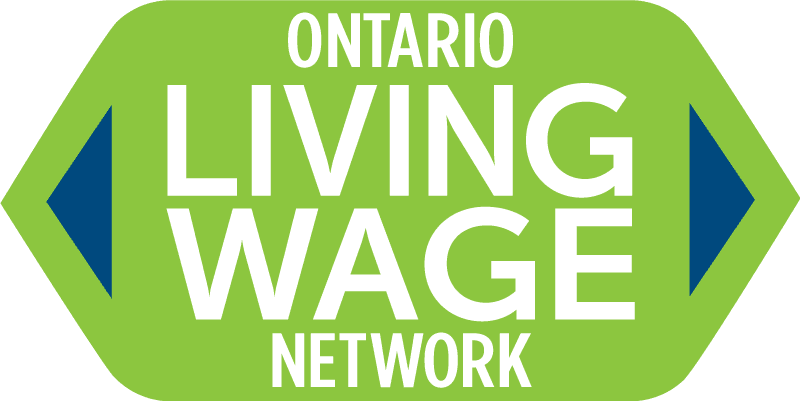Rebuilding Ontario’s economy by planning for a living wage and decent work

As Ontario looks to rebuild its economy, nonprofits face the challenge of meeting the needs of their communities while also supporting their employees.
With this in mind, we recently spoke with Craig Pickthorne of the Ontario Living Wage Network about the importance of a Living Wage, and the key role it will play in the province’s economic recovery.
What is the Living Wage and why is it important?
First off, it’s not the same as the minimum wage, which is the wage employers are mandated to pay. It’s what it takes to make ends meet based on the actual costs of living in a specific community, and draws on community-specific data to determine an hourly living wage.
Can you describe how it is calculated?
A Living Wage assumes an example of a family of two adults working full-time supporting two small children. We track expenses like transportation, food, rent, childcare, and also take into account government transfers, taxes, and benefits.
It’s pretty modest, and it does not include things like saving for a child’s future education, retirement, debt servicing, or home ownership.
Is there a connection between Decent Work and the Living Wage?
I always believed there was a natural affinity between Decent Work and the Living Wage. In fact I thought that it wasn’t Decent Work unless the Living Wage was part of the calculation of an entry level employee’s pay scale. There needs to be a plurality of voices and experiences in this movement to value workers properly, and the living wage adds responsible employers to that mix.
Certified living wage employers are great at reminding us that there are businesses out there that agree that a $15 minimum wage makes sense, and that paying a living wage makes good business sense.
How does the Living Wage Certification work?
Certification is a legal agreement where the employer enters a legal agreement to pay at least a Living Wage. Sometimes they may not be able to pay all employees a Living Wage immediately, so we have a tiered implementation so at least you get them on board, and ramp it up gradually.
Why do you think employers choose to become certified living wage employers?
We ask every new employer what brought them to the living wage movement. They often give very personal and specific answers.
For instance, there was feedback from a metalworking firm in Niagara Region.
They were experiencing pressure to keep HR costs down, and ended up using temp agency employees, some of whom had to keep several jobs. Many workers became easily fatigued, and in manufacturing, this can become a safety issue as they were operating heavy equipment.
Ultimately, they worked towards getting everyone up to a Living Wage. Employees no longer need to work multiple jobs to make ends meet.
In other industries, such as the creative sector, unpaid internships are common. If you’re a creative firm trying to attract the best talent coming out of school, paying a Living Wage is a way to stand out and attract the best talent.
What about the Nonprofit employers?
Nonprofit employers were the first and largest champions of the Living Wage. Social Planning Councils, local United Ways, and local Health Units were early Living Wage adapters and were integral in the early days of the Living Wage movement.
We also have a certification fee table structured on employee count, there is a for profit/commercial and nonprofit employer category, and nonprofits pay less for certification.
What role can the Living Wage movement can play in Ontario’s economic recovery?
We are seeing the value of essential workers, who were often invisible and undervalued. The Living Wage can play a role holding employers more accountable. For example, many cashiers, with the $2 increase, managed to hit the Living Wage only to have it taken away as the worst of the pandemic had passed. I’m confident in the not-too-distant future, consumers will seek out Living Wage employers, as they now do now when they seek out wholesome organic produce or a local farmer’s market. Consumer behaviour is constantly changing. What’s clear is people have an appetite for their friends and families and neighbours to earn a Living Wage.
Frames can be heavy things to shift, and can take many groups representing different perspectives. The living wage is one of many such perspectives within the movement for decent work.
Setting the stage for the Living Wage campaign in Ontario:
- The idea of a Living Wage was first explored 12 years ago by Jim Stanford and Hugh Mackenzie in a report focusing on Toronto https://www.policyalternatives.ca/publications/reports/living-wage-toronto
- In 2018, Jim Stanford argued the Living Wage was a necessary step towards building a stronger Ontario: “By valuing the potential of their employees as full-fledged human beings, rather than treating their workers as a production input, a cost to be minimized, these enlightened employers recognize that their own businesses as well as society will do better when people are paid a living wage, and able to participate fully in all aspects of life.”
The Living Wage in action: Cake & Loaf bakery in Hamilton
Josie Rudderham of Cake & Loaf bakery in Hamilton speaks about the business case for paying a living wage
The Living Wage in action: Pre-line Processing/Damin Starr Commercial Enterprises in Hamilton”
Damin Starr shares his company’s transition from a temp workforce to a permanent one. From the Better Way Alliance





